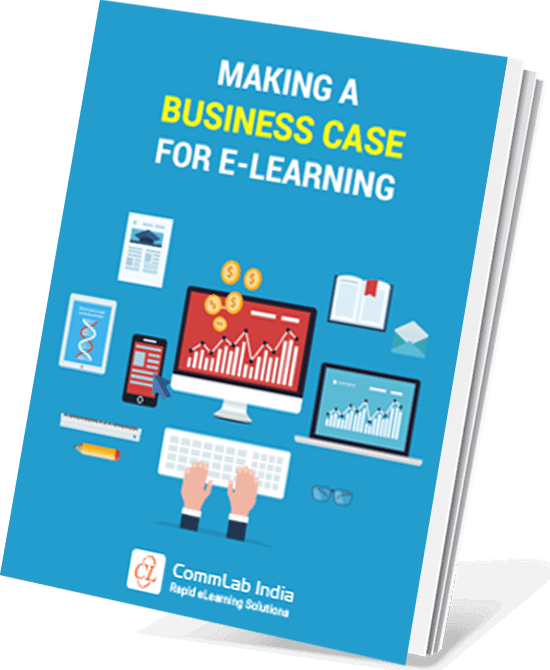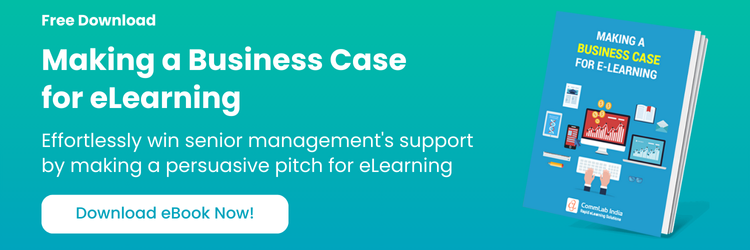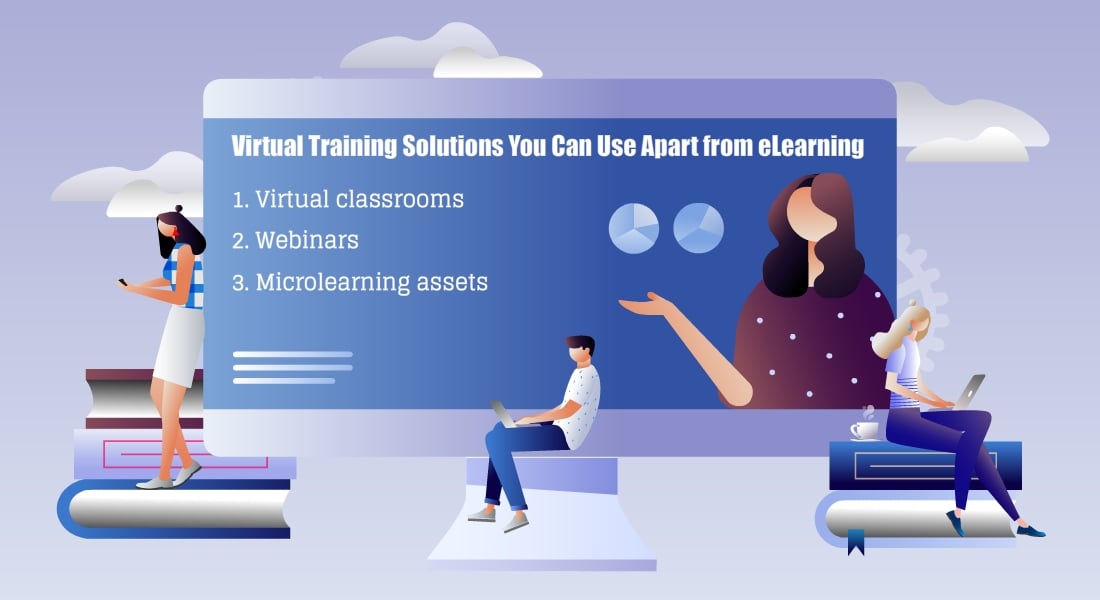Let’s be honest, the term eLearning solutions doesn’t exactly make hearts race. It sounds like a line item in a budget meeting. But here’s the twist, behind that bland name hides one of the most powerful competitive levers your business has right now.
Think about it. With the right eLearning strategy, you can onboard a thousand people before lunch, roll out compliance changes across five continents in a week, or turn your sales team into product evangelists overnight without booking a single conference room or printing a single manual.
In 2025, eLearning isn’t just “training online.” It’s how companies scale culture, skills, and strategy at the speed of business change. It’s Netflix for capability-building, with the added bonus of proving its ROI down to the decimal.
And in the sections ahead, we’re going to break it open, what it really does for organizations, the measurable impact it drives, and how different flavors of eLearning (from leadership to sustainability) deliver more than knowledge they deliver transformation.
Download eBook: Making a Business Case for eLearning
Table Of Content
- What Are eLearning Solutions?
- What Do eLearning Solutions Help With?
- What eLearning Tools Power Different Corporate Training Programs?
- How Did eLearning Drive Change in the Healthcare Industry?
- What Are the Easy Steps to Help eLearning Solutions Adapt Quickly?
What Are eLearning Solutions?
An eLearning solution is more than an online course, it’s a strategic framework for creating, delivering, and managing training digitally to achieve measurable business outcomes.
Core Components of eLearning Solutions
What makes an eLearning solution effective is a blend of several essential components:
- Instructional Design Best Practices - Applying proven learning principles to make content engaging, relevant, and easy to apply.
- Multimedia and Interactivity - Incorporating videos, simulations, branching scenarios, quizzes, and gamification to maintain learner interest.
- Learning Management Systems (LMS) - Platforms for hosting courses, delivering them to learners, tracking progress, and generating reports.
- Learning Analytics and AI Insights - Gathering and analyzing learner data to measure effectiveness and guide improvements.
- Accessibility and Inclusivity - Designing courses that accommodate all learners, including those with disabilities, using accessible formats, captions, and language options.
- Content Updating and Version Control - Ensuring material stays accurate and relevant by enabling quick updates without rebuilding entire courses.
- Integration with Business Systems - Connecting theLearning management system and learning data with HR, CRM, or performance management tools for a seamless flow of information.
What Do eLearning Solutions Help With?
eLearning solutions help organizations deliver consistent, engaging, and measurable training anytime, anywhere, making it easier to develop skills, meet compliance needs, and improve performance across the workforce.According to PwC, e-learning requires 40–60 % less employee time than traditional classroom training, boosting both efficiency and engagement.
1. Scaling Training Across Locations and Time Zones
Whether your employees are in one city or spread across continents, eLearning ensures everyone gets the same training, at the same standard, without waiting for a scheduled session. A course launched today can be taken by teams in Asia, Europe, and the U.S. before the week ends.
2. Reducing Training Costs and Delivery Time
Once a course is built, it can be reused and updated without repeating instructor fees, travel costs, or venue bookings. Pairing self-paced eLearning withblended learning models also reduces classroom time, cutting both expenses and delays in deployment.
3. Boosting Learner Engagement with Multimedia Formats
Learning sticks better when it’s interactive. Videos, simulations, quizzes, and branching scenarios make content easier to absorb and more enjoyable to complete, turning what could be a compliance chore into an engaging experience.

Making a Business Case for eLearning
Win Senior Management's Support by Making a Persuasive Pitch for eLearning
- Growing Adoption of eLearning
- Benefits and Limitations of eLearning
- Applications of eLearning for Different Trainings
- And More!
4. Tracking Learning Outcomes and Business Impact
With built-in analytics, you can track completion rates, assessment scores, and learner progress. More importantly, you can connect these metrics to performance data to see if training is improving productivity, reducing errors, or increasing sales.
5. Supporting Hybrid and Remote Workforces
As teams work in different locations, training has to reach everyone equally. eLearning gives remote employees the same opportunities as those in the office, keeping knowledge and skills consistent across the organization.
6. Ensuring Consistent Compliance and Onboarding Processes
From legal requirements to company standards, consistency is key. eLearning ensures every learner receives the same approved information, reducing compliance risks and helping new hires get up to speed faster.
In short, eLearning solutions let organizations deliver training that is accessible, consistent, measurable, and scalable all without the limitations of traditional classroom sessions.

What eLearning Tools Power Different Corporate Training Programs?
What Are the Updates You Need to Consider for eLearning Solutions
To keep eLearning solutions effective, updates should focus on:
- Current Business Goals - Remove outdated objectives and align with present needs.
- Industry & Compliance Changes - Reflect new regulations and standards.
- Learning Behaviors - Adapt for mobile, microlearning, and short attention spans.
- Technology - Add AI, better analytics, and immersive media where useful.
- Skill Gaps - Use data to update weak areas.
- Accessibility & Inclusivity - Meet evolving guidelines and cultural needs.
The beauty of custom eLearning solutions is that they can be purpose-built for the specific training challenges of an organization. While generic training may deliver information, it often fails to inspire action or change behavior.
Here’s how corporate eLearning solutions, paired with powerful tools and technologies, can transform six essential training types:
1. eLearning for Onboarding Training
Welcomes new hires with a structured, engaging introduction to the company’s mission, policies, teams, and tools. Incorporates interactive elements to build confidence and shorten time-to-productivity.
Tools:
- Loom - For quick, personalized video welcomes and walkthroughs from managers or team members.
- Trello - For organizing onboarding tasks and tracking completion in a collaborative way.
- Typeform - For collecting feedback and running engaging, survey-based knowledge checks.
2. eLearning for Leadership Training
Focuses on improving decision-making, communication, and management skills using real-life situations. Leaders can work through scenarios and review different approaches.
Tools:
- Articulate Storyline 360 - For branching scenarios where leaders make high-stakes choices.
- Adobe Captivate - For interactive simulations and role-play exercises.
- Vyond /Synthesia AI video generator - For personalized video-based storytelling.
3. eLearning for Sustainability Training
Explains ESG policies and shows how they apply in daily work. Uses visual and interactive formats to make the content easier to understand.
Tools:
- Rise 360 - For responsive,microlearning courses.
- Genially - For interactive infographics and data visualizations.
- Kahoot! / EdApp - For gamified challenges that reinforce eco-friendly practices.
4. eLearning for Technical Training
Provides step-by-step guidance on using tools, equipment, or software. Allows learners to practice tasks in a safe and controlled environment.
Tools:
- Adobe Captivate (VR) - For simulating equipment handling or environments.
- SimTutor - For interactive troubleshooting and procedural training.
- TechSmith Camtasia - For step-by-step software demonstrations.
5. eLearning for Product Training
Gives employees information about product features and benefits through interactive modules. Helps teams learn how to use or sell the product correctly.
Tools:
- CenarioVR / Adobe Aero - For immersive, 3D product walkthroughs.
- iSpring Suite - For interactive product quizzes and scenario training.
- LMS integrations - To deploy updates instantly across global sales teams.
6. eLearning for Compliance Training
Covers laws, regulations, and policies in a way that is easy to follow. Uses examples and scenarios to show correct and incorrect actions.
Tools:
- Articulate Storyline - For branching decision-making paths.
- Quizizz - For gamified assessments and real-time scoring.
- Multilingual Wrapper - For rapid translation and localization in compliance-heavy industries.
7. eLearning for Sales Enablement
Helps sales teams learn how to approach customers, handle questions, and present products effectively. Training can be accessed on any device whenever needed.
Tools:
- Rehearsal / Allego - For video pitch practice and peer feedback.
- Articulate Storyline - For interactive objection-handling scenarios.
- Mobile-first design tools - To ensure learning can be accessed before client meetings.
By selecting the right tools for each program, eLearning training solutions can be designed to address not just what employees learn, but how effectively they apply it in their roles.
Understanding the tools and approaches is one thing, but seeing how they work in practice brings the picture into focus. The following example will make you understand the same better.
How Did eLearning Drive Change in the Healthcare Industry?
This case study explores how eLearning solutions were used to address health inequities in targeted communities. By combining interactive scenarios with reflective learning, medical professionals gained deeper insight into patient needs.
- Organization Background: An almost 100-year-old nonprofit in the United States works to prevent heart disease and stroke through research funding, public education, and advocacy for healthy living.
- Problem to Solve: In some Baltimore communities, deaths from cardiovascular diseases were 40% higher than the city average. Medical professionals needed awareness and guidance on addressing these health inequities in their patient interactions.
- eLearning Approach CommLab India created a three-module eLearning course (90–120 minutes) in Articulate Storyline 360. The program included:
- Short video introductions for each module.
- Reflection questions connecting lessons to the learners’ own experiences.
- A case study of an elderly African American woman with cardiovascular disease.
- Scenarios showing real patient–provider interactions.
- Outcomes Achieved Medical professionals developed greater awareness of health inequities and improved their approach to patient care. The program contributed to the nonprofit’s goal of improving healthcare access and outcomes in high-risk communities.

What Are the Easy Steps to Help eLearning Solutions Adapt Quickly?
A well-structured approach ensures eLearning solutions remain current, relevant, and aligned with organizational objectives. It also enables faster updates and smoother deployment when training needs change.
Watch how 7 key strategies can transform your eLearning into an engaging, interactive experience.
- Conduct Regular Needs Analysis Review business priorities, performance data, and learner feedback to identify skill gaps and training requirements before they become urgent.
- Design in Modular Format Create courses in smaller, stand-alone units so specific sections can be updated without rebuilding the entire program.
- Centralize Content Management Host and manage all training through a learning management system (LMS) to ensure new or revised content reaches all learners immediately.
- Use Data to Guide Changes Track completion rates, assessment scores, and learner engagement to measure effectiveness and make informed improvements.
- Maintain a Clear Update Process Follow a defined workflow for reviewing, revising, and releasing updates to keep training accurate and relevant.
By following these steps, custom eLearning solutions, corporate eLearning solutions, and eLearning training solutions can be kept flexible, accurate, and closely aligned with evolving organizational needs.
Drive learning results with custom eLearning solutions by CommLab India
The Way Forward with eLearning Solutions
eLearning solutions give organizations the ability to deliver training that is consistent, engaging, and measurable, while adapting to changing needs.
When planned strategically, they can close skill gaps, serve diverse teams, and improve overall results. Gaining leadership buy-in becomes easier when you present a clear, compelling case for eLearning.
To explore the growing adoption of eLearning, its applications across training topics, the preparation needed, cost considerations, and implementation approaches, download this ebook now.







![Impact of AI-driven Corporate Training: The Upsides and Downsides [Infographic]](https://www.commlabindia.com/hubfs/ai-training-impact-infographic.jpg)
